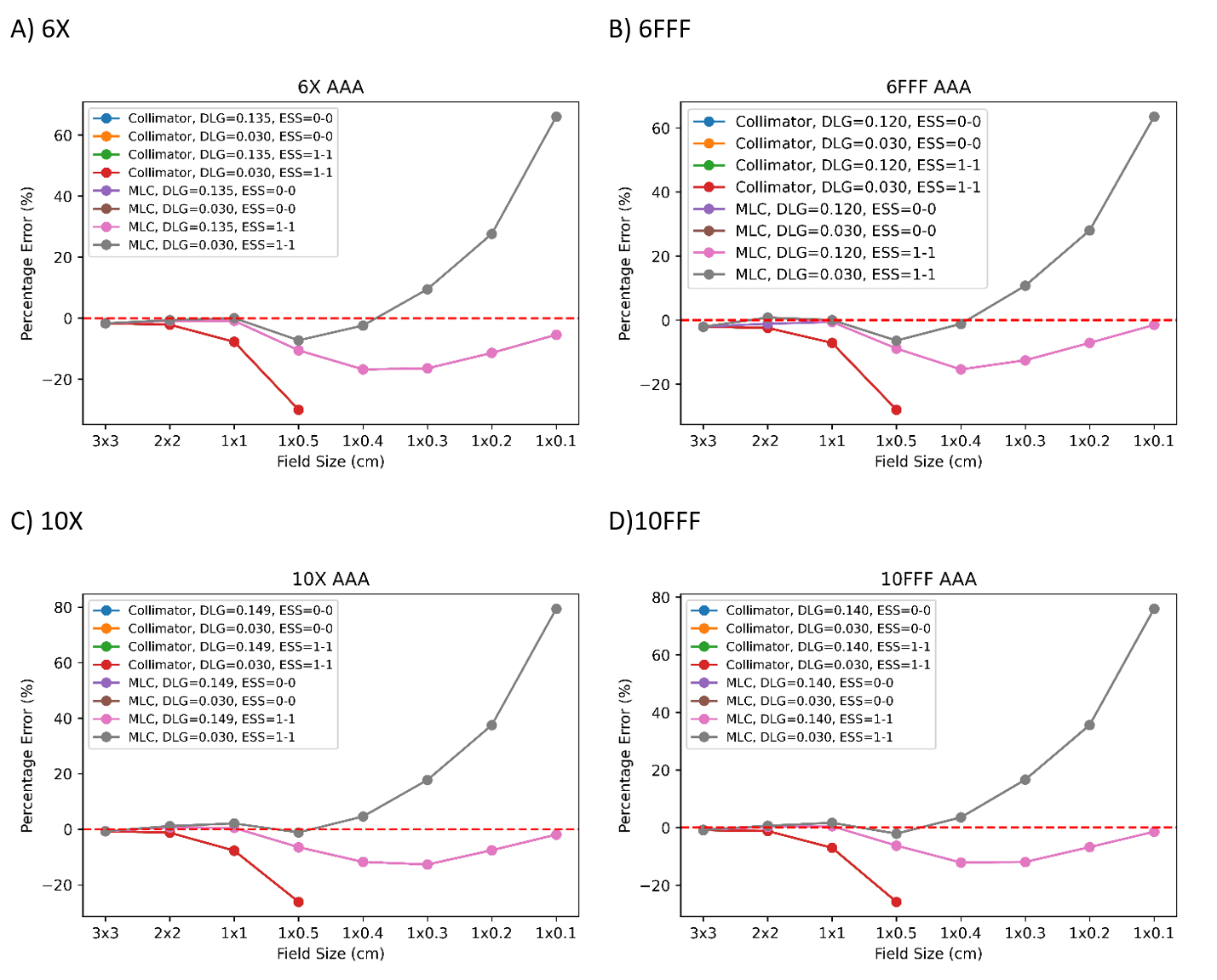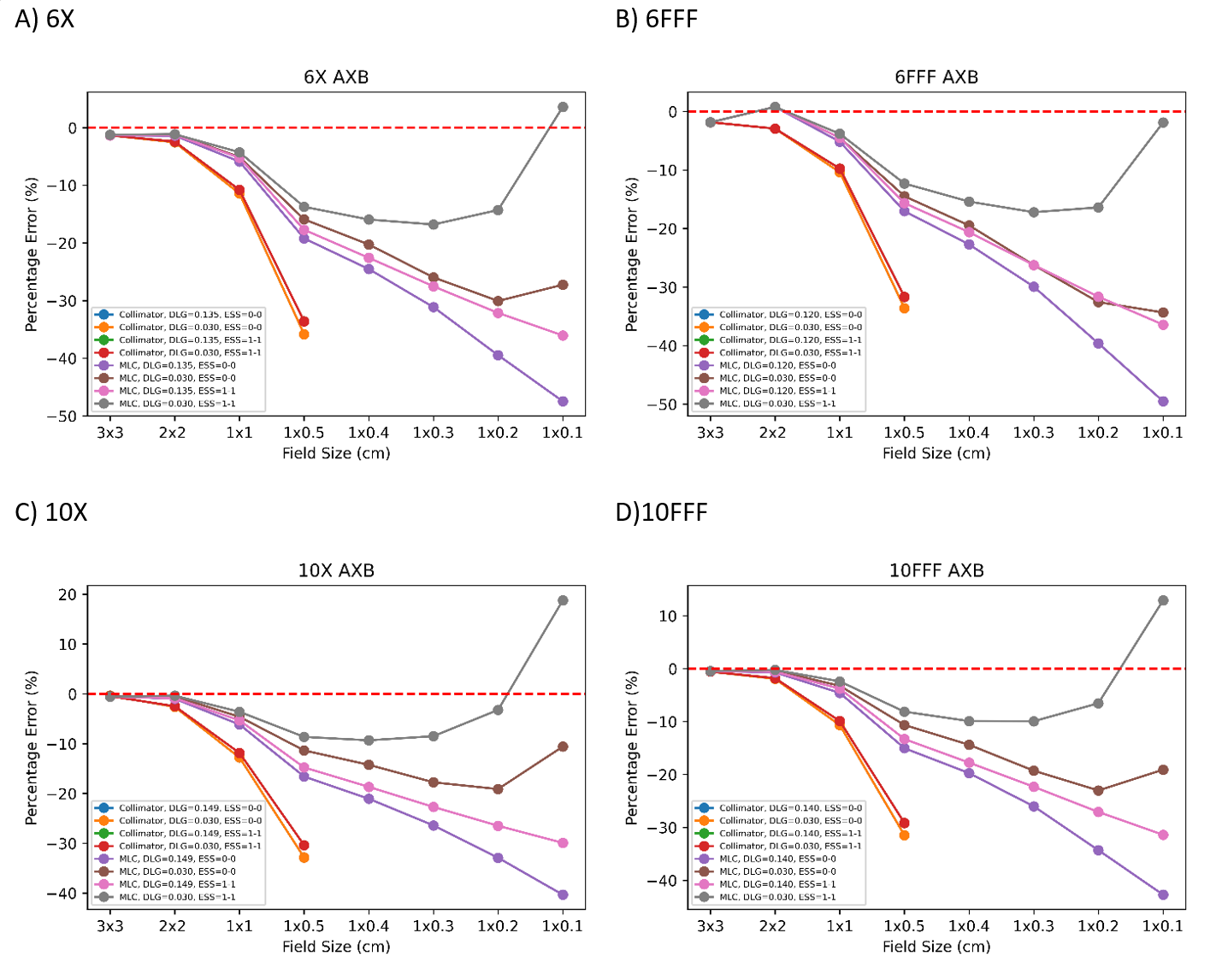small field dosimetric accuracy in Eclipse TPS using jaw and MLC delineated field size
PO-1556
Abstract
small field dosimetric accuracy in Eclipse TPS using jaw and MLC delineated field size
Authors: Kah Seng Lew1, Hong Qi Tan1, Jun Hao Phua1, Yongjie Glen Mok1, Ghee Ann Clifford Chua1, Wei Yang Calvin Koh1, Khong Wei Ang1, Sung Yong Park1, James Cheow Lei Lee1
1National Cancer Centre Singapore, Division of Radiation Oncology, Singapore, Singapore
Show Affiliations
Hide Affiliations
Purpose or Objective
TPS plays an important part in the dosimetric
accuracy of small fields radiotherapy. Improper beam modelling of small fields
will affect the dose delivery. As Eclipse TPS only considers beam profile data above 3x3 cm2,
modelling of small field by the MLC (while keeping jaw
at 3x3cm2) might produce a better dose accuracy as compared to jaw
delineated field size. In this work, both convolution-based anisotropic
analytical algorithm (AAA) and the Linear Boltzmann Transport Equation solvers AcurosXB
calculation algorithm (AXB) are evaluated on their dose accuracy under various
jaw and MLC-delimited field sizes. Different beam parameters such
as dosimetric leaf gap (DLG) of the MLC and effective spot size (ESS) of the
beam are also varied to evaluate the dosimetric accuracy.
Material and Methods
Four different energies are used
in this study: - 6X, 6FFF, 10X and 10FFF. Jaws delineated field size of 3x3cm2,
2x2cm2, 1x1cm2, 1x0.5cm2 are measured at
95cm SSD with a fixed 100MU using PTW 31006 PinPoint detector. For MLC
delineated field size, in additional to the above field size, 1x0.4cm2,
1x0.3cm2, 1x0.2cm2 and 1x0.1cm2 were also
added in to evaluate the dosimetric accuracy. The measured results are then
compared again TPS calculated values with different parameters. DLG was first
varied by changing from the measured values of 0.1350, 0.120, 0.149, 0.140 for
6X, 6FFF, 10X and 10FFF using sliding gap technique to 0.030 across all energy.
0.25cm calculation grid size and ESS was varied from 0mm in both X and Y
direction (0-0) to 1mm in both directions (1-1) for AAA. The measurement was
repeated using AXB algorithm except the use of 0.10cm for calculation grid
size. The percentage discrepancy between measurement and TPS are reported for various
TPS configurations.
Results
There are
missing lines in the figures due to overlapping results. Across
all plots for AAA, jaws delineated field are found to have similar
percentage errors regardless of the values of ESS with the smallest field size
of 1x0.5cm2 having the biggest error. For MLC delineated fields,
DLG value of 0.030 with ESS of 1-1 is seen to have the biggest percentage error
at 1 x 0.1cm2 while other MLC delineated fields have similar
percentage errors with the biggest error at 1x0.4cm2 and 1x0.3cm2
field size.
Across
all plots for AXB, jaw delineated field size has a slight difference when the
ESS is changed from 1-1 to 0-0 with the smallest field size having the largest
error. MLC delineated field size has a smaller error when a smaller DLG value
of 0.030 is used for calculation. ESS of 1-1 also provides a more accurate
calculation. MLC delineated field with DLG of 0.030 and ESS of 1-1 is then the
better option for AXB calculation as compared to others. 

Conclusion
Using MLC delineated field size provides a better
dosimetric accuracy when modelling in the TPS for field sizes between 3x3 cm2
and 1x0.5 cm2. For fields smaller than 1x0.5 cm2, dose
calculation can be made more accurate using AXB calculation with ESS of 1-1
with a DLG of 0.030.